Facing Financial Fragility

Americans are struggling with their financial health due to a complex tapestry of societal and economic challenges. It’s contributing to self-reported financial wellness being at its lowest in the past eight years.

Fifty-five percent of Americans faced financial challenges over the past year, which is a substantial increase over 2021, when only 37% felt financial stress. In fact, the top drivers of stress in general for American workers are all linked to effectively managing their financial priorities.
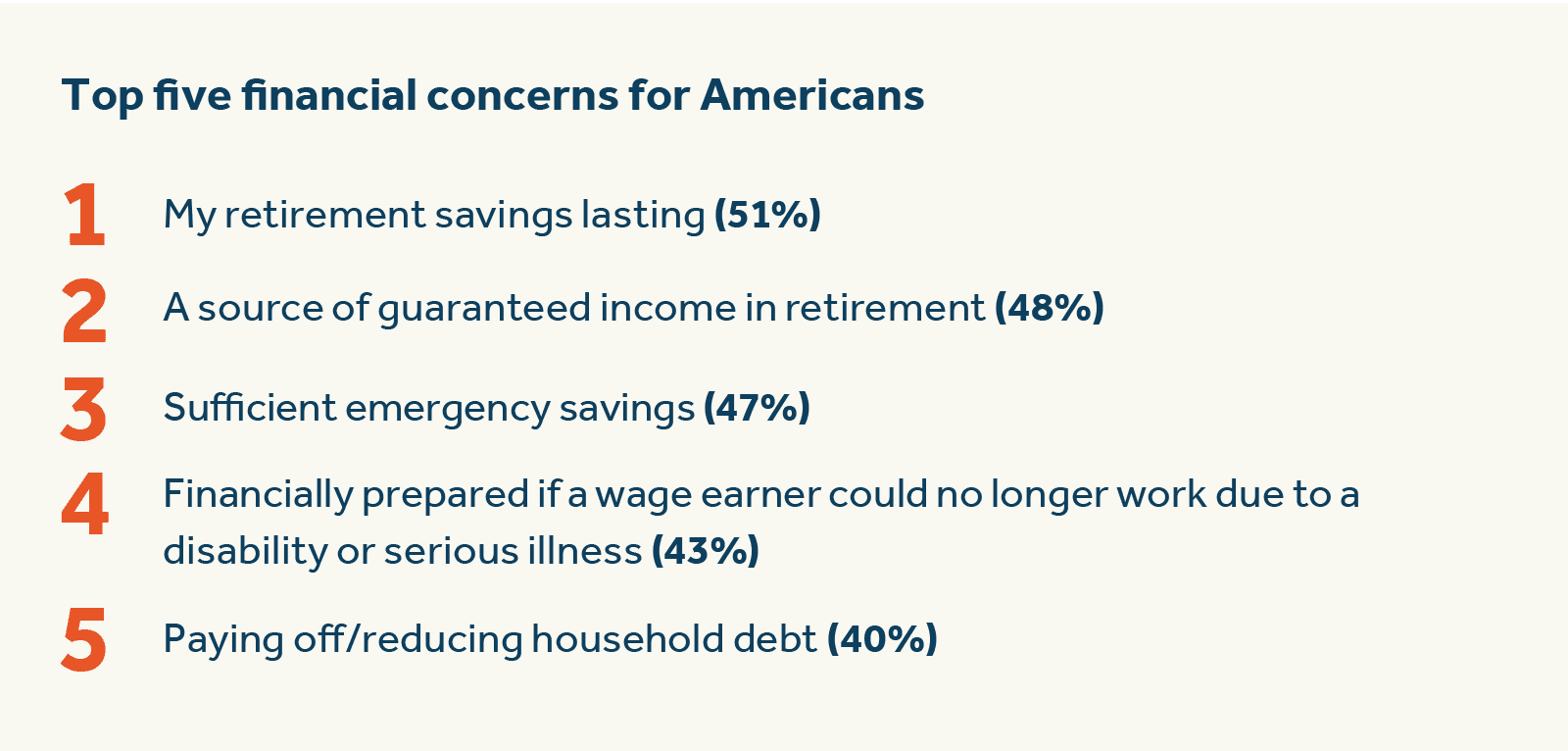
The demographics affected most by low financial health
The rapid rise of this stress is accompanied by a sharp decline in financial wellness index scores — which measure how workers rate their financial wellness on a 10-point scale — since last year, and an overall decline since 2016. And some demographics struggle more than others.
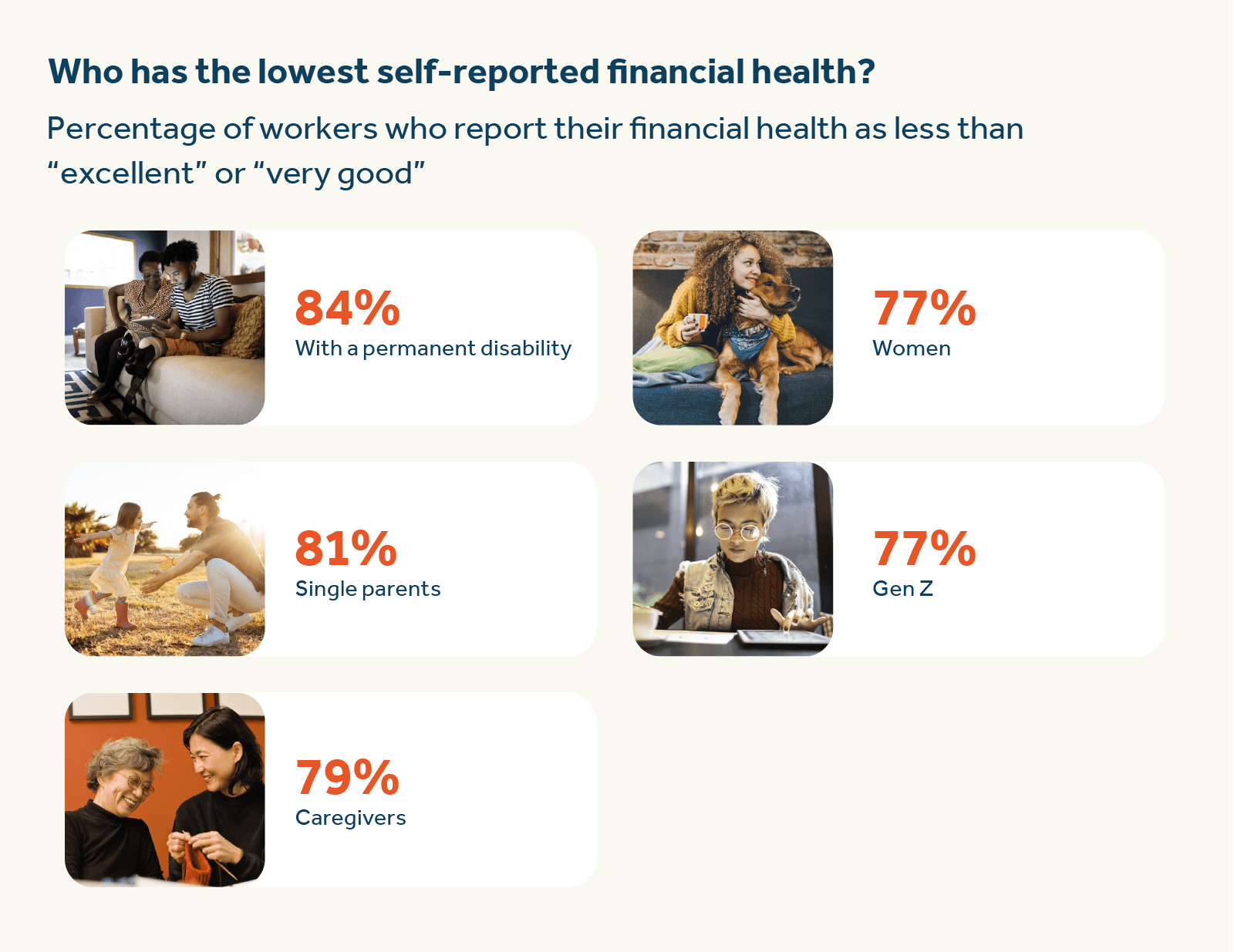
Economic forces have weighed heavily on Americans’ financial wellness for more than two decades
Since the turn of the 21st century, cost-of-living expenses have been rising steadily for workers, far outpacing the average increase in household income.
Everything from housing, rent, childcare, and education to everyday commodities like groceries, gas, and electricity have surged in cost — and are the most expensive they’ve been in 20 years.
Median household income has increased just 10% since 2000, while expenses have climbed to unprecedented heights.¹
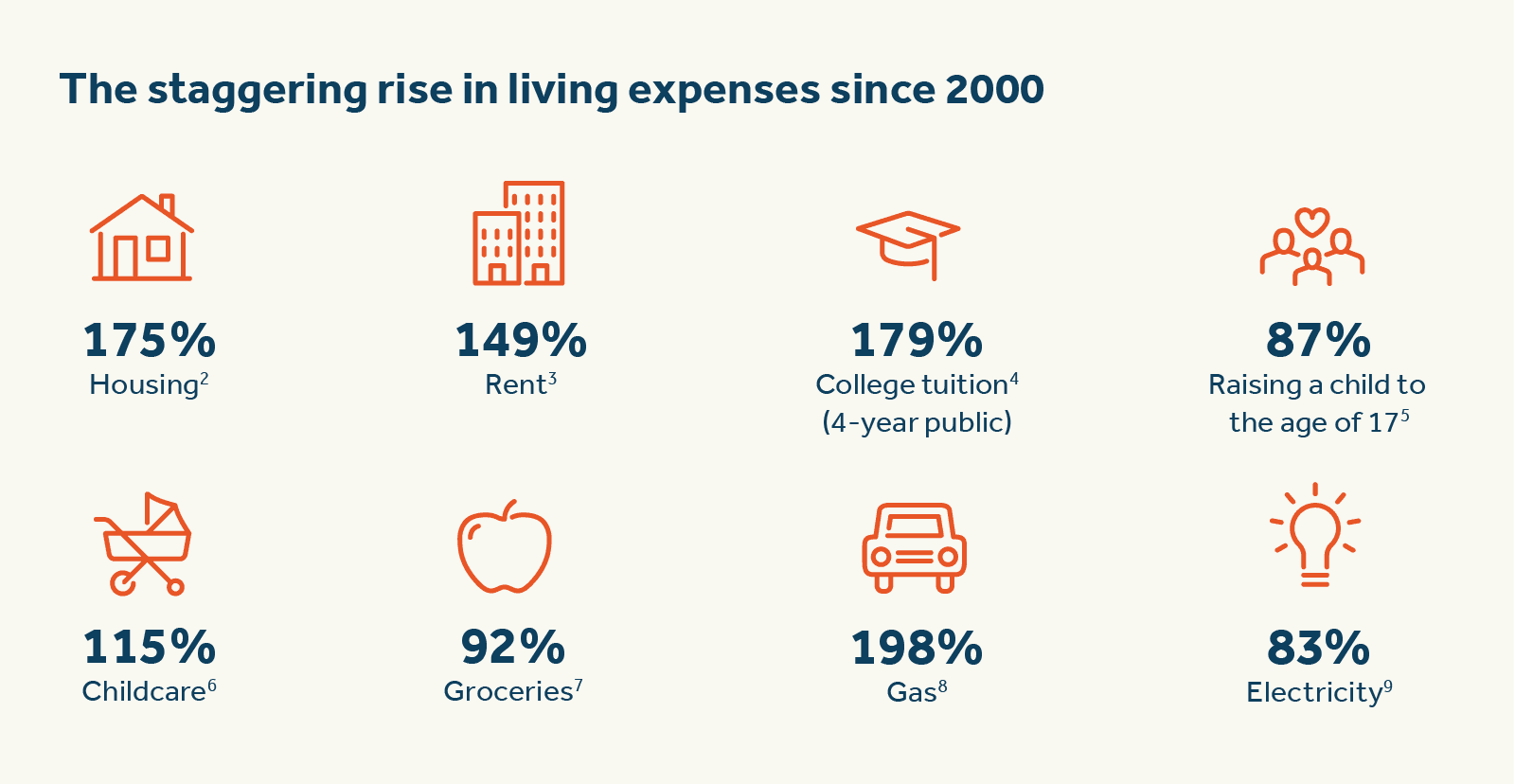
As the cost of living has increased, wages have failed to keep up, forcing Americans to rethink their financial habits
More than 70% say that inflation or cost-of-living had a significant personal impact on them in the past year, affecting their decisions around how they allocate their spending.10

American workers are also facing wage stagnation. For example, workers who earn minimum wage — which has not seen a federally mandated increase since 2009 — have taken a real-terms pay cut for the last twelve years.11 While average annual wages in the US have risen 16% since 2000,12 this is well behind the cumulative rise of inflation — 79%.13 Fifty-five percent of workers haven’t had a raise in more than a year, which can have a significant impact on their monthly expenses and ability to save money.14
Financial wellness can impact mental health
The impact of poor financial wellness isn’t isolated to money management. Personal finances are a crucial piece of overall well-being. They weigh on the total picture of an individual’s health more than either mental health or physical health. Plus, when mental health markers are low, financial wellness tends to be as well, making it a bidirectional relationship.
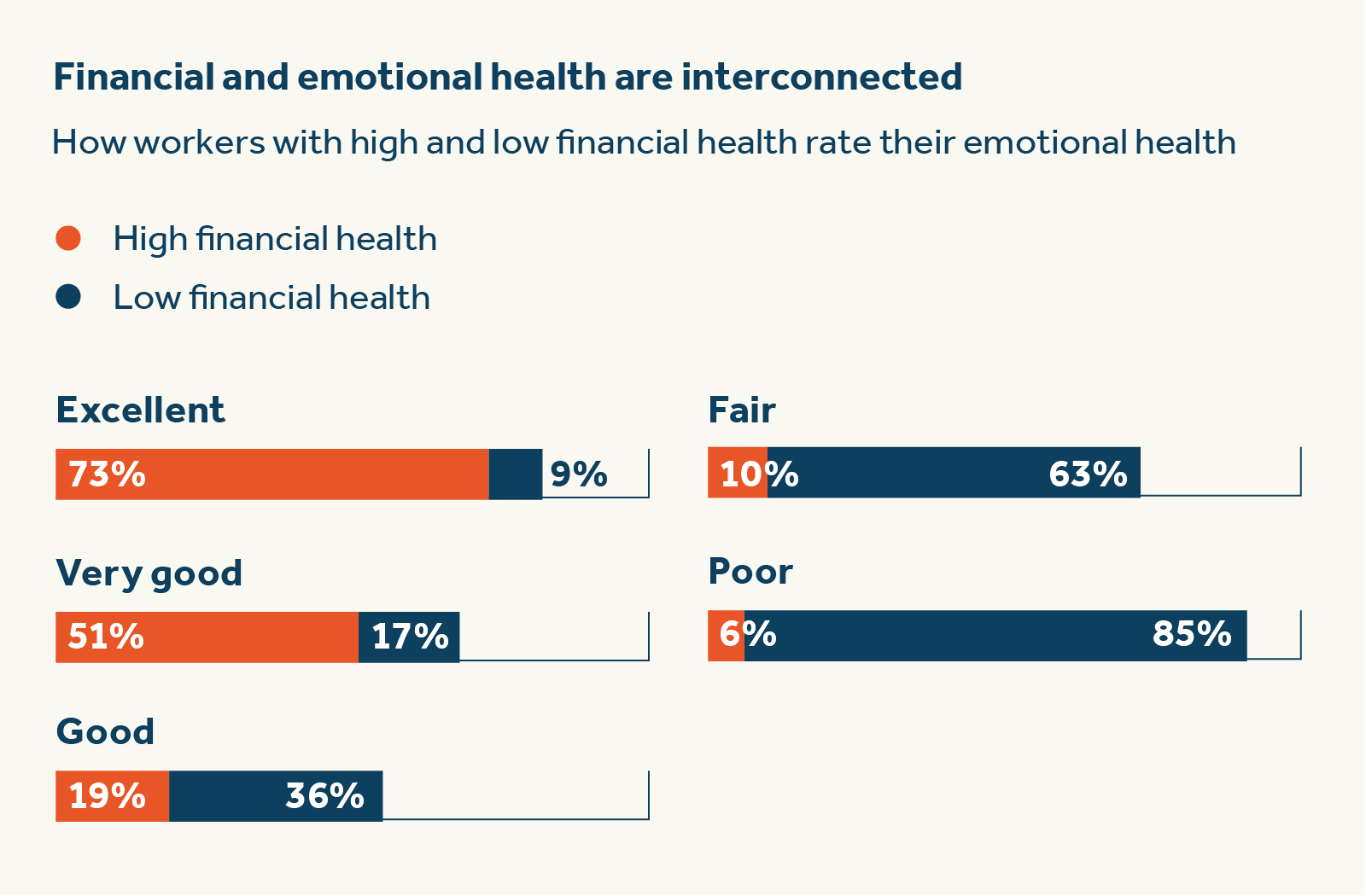
The student loan crisis may lead to prolonged debt and depression
The average cost of college tuition and fees at public four-year institutions has increased 179.2% over the last 20 years — and 124% at private four-year institutions.15 These rising costs have outpaced the rate of inflation by 171.5% and created a precarious situation that's impacting borrowers’ financial wellness when they're left with debt that they may be unable to comfortably pay.
Student debt has more than doubled over the last decade.¹⁶
While higher education has socioeconomic benefits and leaves graduates with higher levels of financial wellness overall, mounting debt is a cause for concern that limits financial freedom.
Overall financial health can also have effects on physical health
Financial wellness also has an interconnected relationship with physical health. The financial stress from ongoing financial obligations can contribute to a variety of negative health issues. Many factors overlap between physical and financial wellness, such as having the time and means to exercise, affording and preparing nutritious foods, and covering potential medical costs.
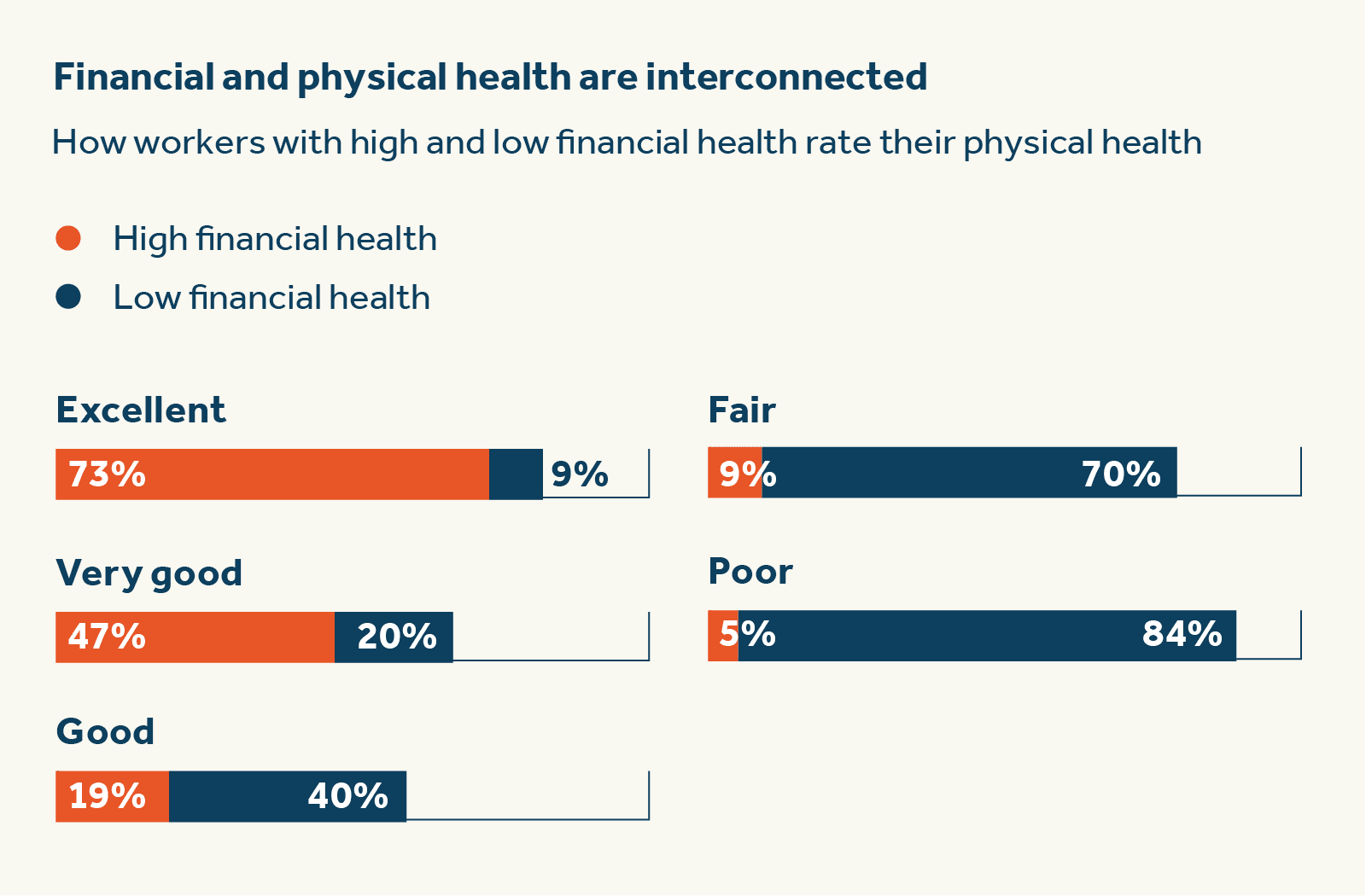
Generation Z and millennials struggle with their financial wellness more than older generations
Younger generations are off to a rocky start when it comes to their financial life, and it’s leaving them more vulnerable than their parents and grandparents.
Baby boomers report the highest levels of financial well-being, with only 8% saying they live paycheck to paycheck.17 They are also the generation that's most likely to feel confident when it comes to paying off debt (32%) and housing costs (22%).
Gen X trails baby boomers when it comes to their economic life. Almost three-quarters (71%) own homes,18 and they hold the majority of workplace leadership roles.19 Additionally, Gen X earns more per household than any other generation20 and has the most disposable income, which leans itself to higher financial well-being.
Millennials, on the other hand — especially young millennials between the ages of 27 and 34 — experience the twofold challenge of achieving a successful financial life. They’re often working to navigate saving for homeownership amid rising interest rates while their rents increase nearly 9% per year.
More millennials (17.1 million) rent than any other generation, and with housing affordability at a 30-year low, those in the market to buy will end up paying a larger percentage of their gross income than first-time buyers in years past.21 Millennials also own almost half (47%) of the nation's outstanding student loan debt, with the average millennial borrower owing $42,637.22
Gen Z is experiencing a stressful entry into the workforce during turbulent economic times, resulting in nearly 7 in 10 saying that financial well-being is their top source of stress. Many are still struggling to find jobs, and for those who are employed, 43% earn less than $50,000, making it a difficult start to their financial journey and meet key financial goals.
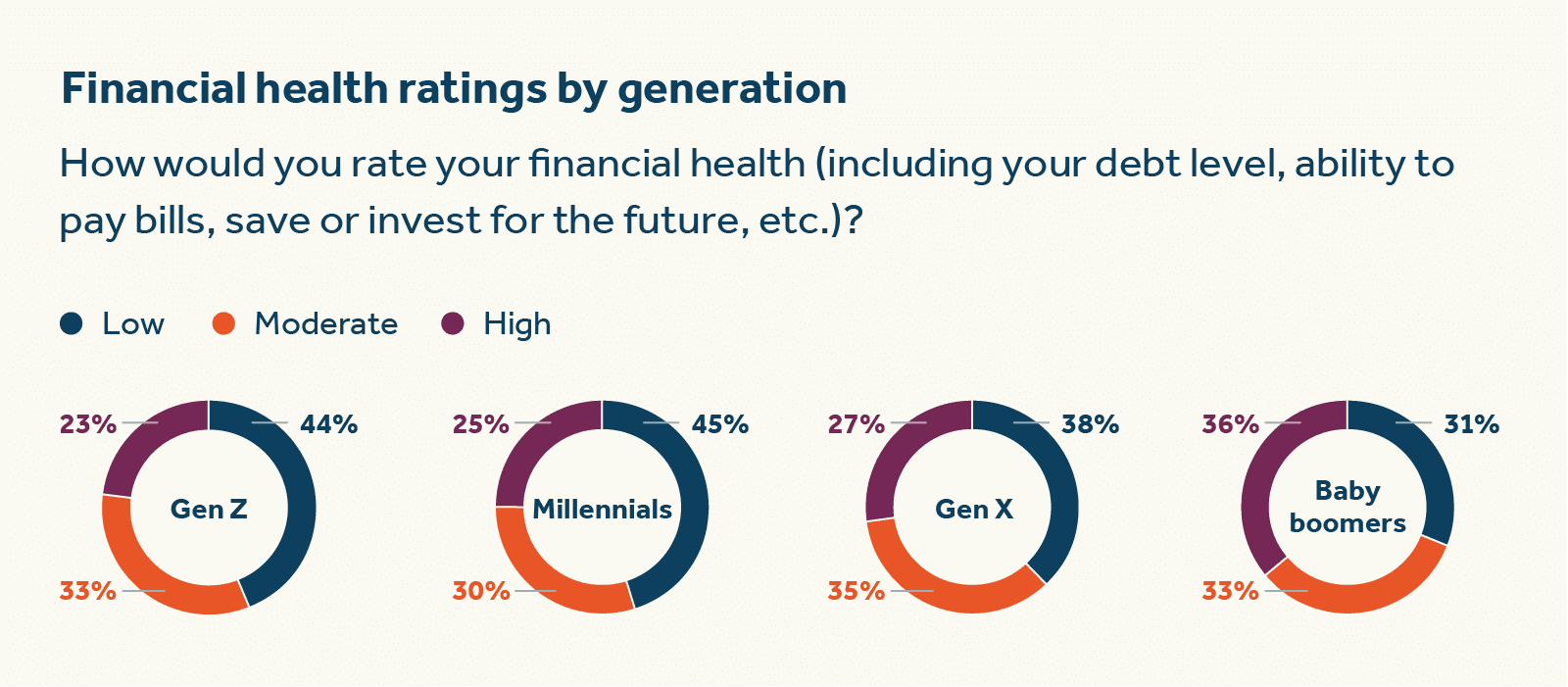
Personal financial health setbacks are impacting nearly all generations, delaying retirement and impacting their financial health in the future
In an economic climate where people are struggling to keep up, planning for the future can be a challenge. Financial wellness involves having enough funds for retirement, and that's something that's a significant concern for many workers. Fifty-one percent are worried about having their retirement account last as long as they need it to, and about 25% of workers don’t have a retirement savings plan at all.
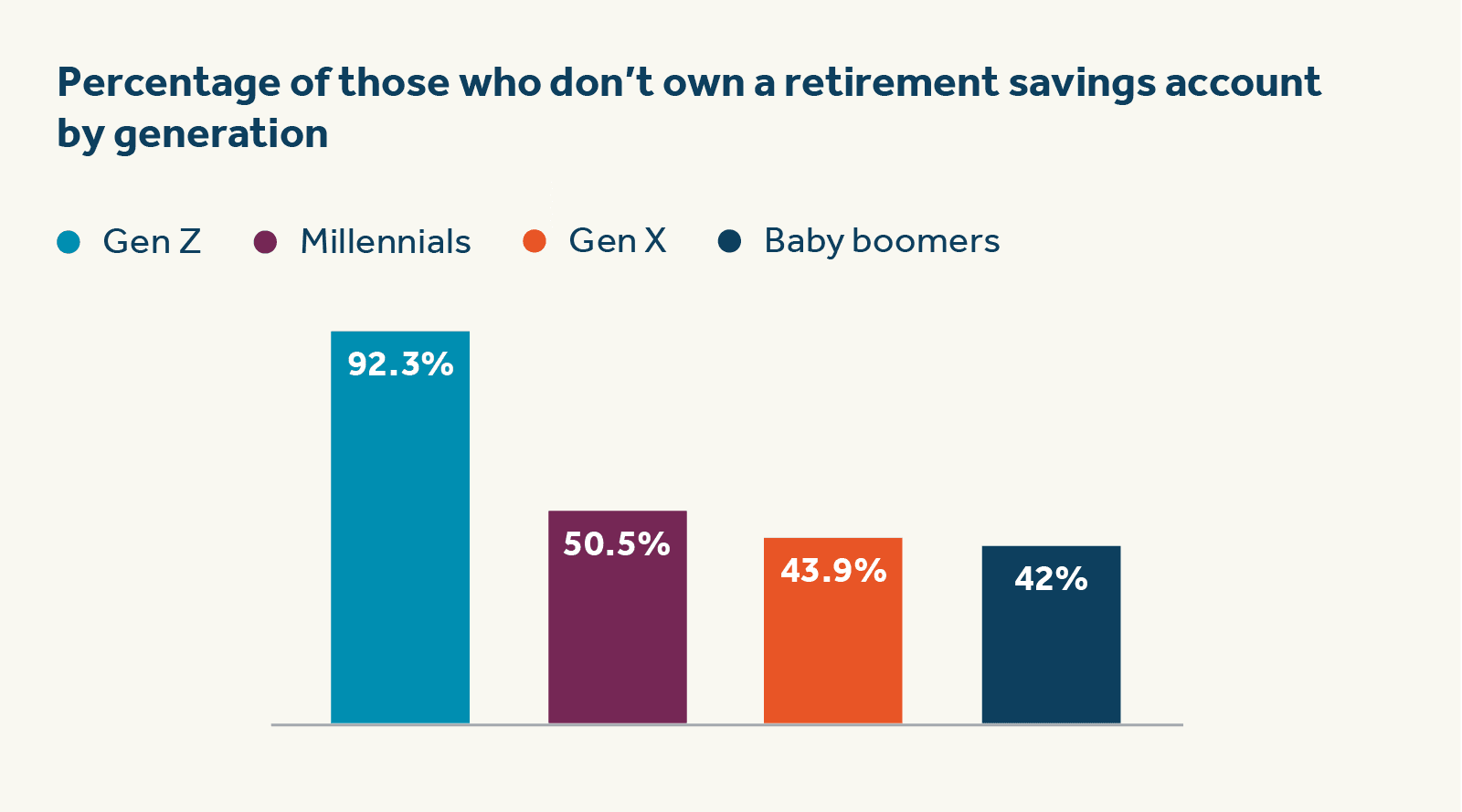
While starting early may be key to building a sustainable retirement plan and reaping the benefits of compound interest, half of millennials and 92% of Gen Z don’t have retirement accounts yet.23 Even many of those closer to retirement age — 42% of baby boomers and 44% of Gen X — don’t have a 401(k) or other retirement savings plan.24
In fact, overall retirement savings ownership has dropped from 60% to about 50% since 2001.25 Half of all baby boomers are planning to postpone retirement, largely due to growing concerns around healthcare costs in retirement and because they haven’t saved enough.
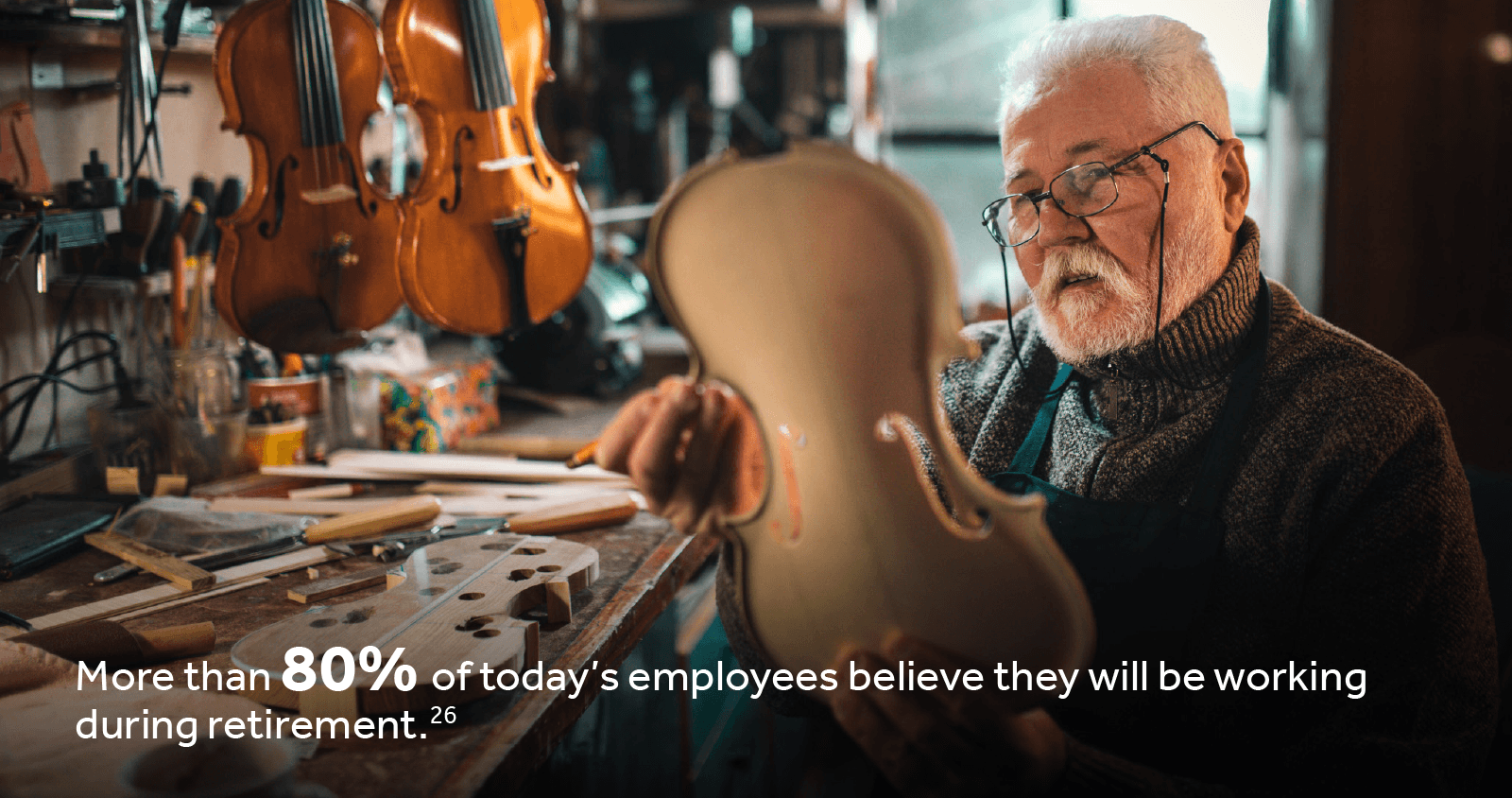
Wage gaps and caregiving responsibilities may put women at a disadvantage with regard to financial well being and financial literacy
Women report lower financial wellness than men, rating their overall financial health and how well they feel they manage their finances nearly than half as high.
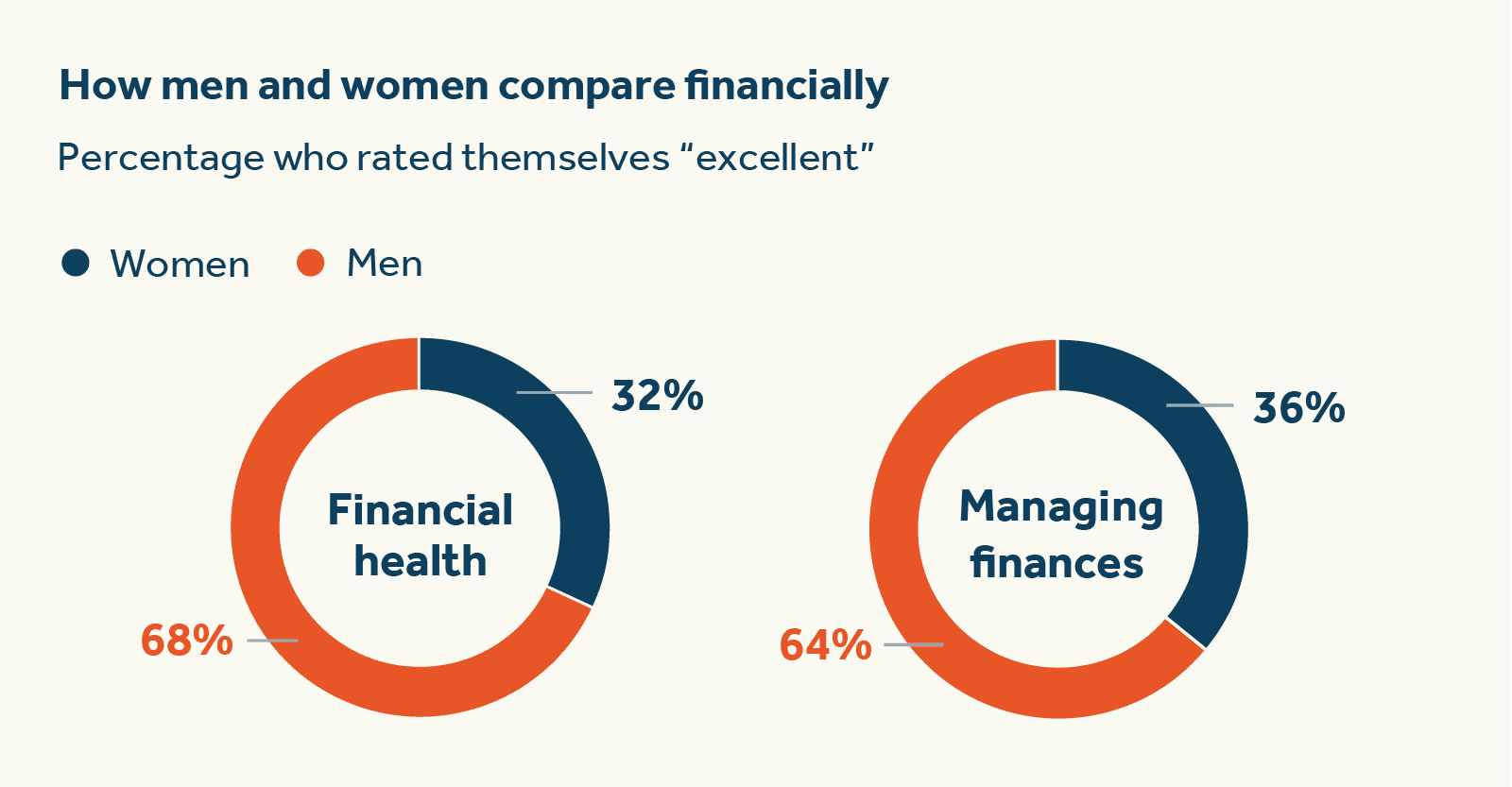
Overall, women are paid 20% less than men.²⁶
Although women are in fact more likely have a four-year college degree than men — 46% versus 36% of adults ages 25-34, on average — men are paid $1,219 per week and women $1,002.27 Earnings increase with education, but even with equivalent degrees like a master's degree, the gender wage gap persists.
There are over 10 million single-parent households in the US, and more than 80% of them are single mothers.28 Income for single mothers has decreased over the past several years, with nearly half of them living below the poverty line, making it nearly impossible to reach their financial goals.
Financial literacy among women consistently tends to trail men, with only 10% of women demonstrating high financial literacy versus 23% of men.29 The three weakest areas of financial literacy for women are “investing," "insuring," and "comprehending risk.”30
Those with higher education levels have better financial wellness and may be more likely to work with financial professionals
There’s a strong link between someone’s level of education and their financial wellness. While the cost of obtaining an education, particularly at the college level, has increased substantially over the past 20 years,31 those who have done so appear to position themselves in a better position to achieve financial wellness.
Annual income tends to be around $17,500 higher for college graduates than high school grads, and their financial futures are rosier, with an expected estimated earned total of $1 million more in a lifetime of work.32
The higher someone's education level, the higher their available emergency savings fund may be.
Organizations want to step up to support their workforce’s financial wellness, but not all efforts may be resonating with workers
Organizations are beginning to change their priorities to better support their workers' financial wellness. Eight in 10 employers believe that improving the financial security of employees and their families is "extremely" or "very important."
In 2023, Guardian’s Workforce Well-Being IndexTM showed for the first time that it was a top priority for employers to address—and hopefully improve—their workforce's financial well-being.

